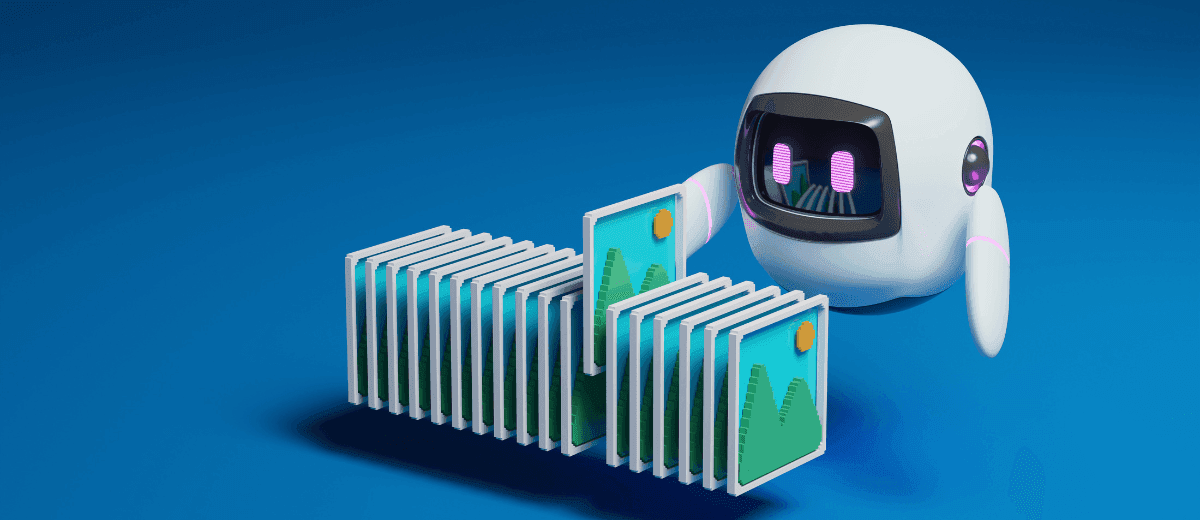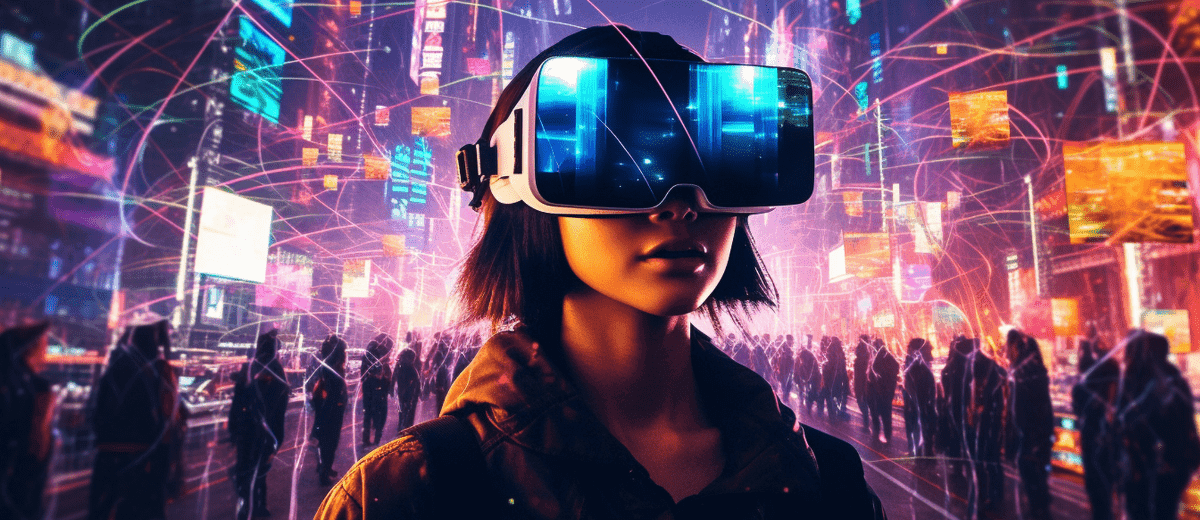- 22nd Sep, 2023
- Arjun S.
Generative AI: Elevating Digital Art and Design Creativity
16th Dec, 2023 | Aanya G.
- Emerging Technologies

The intersection of art and technology has always been fertile ground for innovation, and Generative AI has emerged as a powerful force driving this evolution.
This blog delves into the world of Generative AI, exploring its techniques, real-world applications, advantages, and challenges within the realm of art and design.
We will embark on a journey to understand how AI is not only transforming creative processes but also reshaping the very definition of art itself.
Understanding Generative AI
Generative AI is a subset of artificial intelligence focused on the creation of new content, be it images, music, text, or even code.
These algorithms, fueled by neural networks and deep learning, learn from big sets of data. This helps them recognize patterns, understand connections, and create one-of-a-kind results.
This process empowers AI to not only mimic existing styles but also to venture into uncharted creative territories.
Generative AI Techniques in Art and Design
The integration of Generative AI has opened doors to exciting possibilities in art and design. Let's explore some key techniques:
1. Neural Networks
Neural Networks, inspired by the structure of the human brain, form the core of Generative AI. Neural Networks consist of interconnected nodes, or artificial neurons, that process information in layers.
In the context of art and design, these networks can be trained on massive datasets of images, allowing them to learn intricate patterns, styles, and structures.
2. Deep Learning for Art Generation
Deep Learning, a subset of machine learning, involves training models on multiple layers of data representations.
This enables machines to discern complex features and relationships within the input data.
In art generation, Deep Learning algorithms can analyze the nuances of various artistic styles and produce novel creations that resonate with human aesthetics.
3. Style Transfer
Style transfer is a popular application of Generative AI in the art world.
By leveraging Neural Networks, these algorithms can transfer the style of one image onto the content of another, creating visually stunning and unique pieces that blend different artistic elements seamlessly.
4. GANs (Generative Adversarial Networks)
GANs are a groundbreaking development in Generative AI. Comprising a generator and a discriminator, GANs engage in a continuous loop of creating and critiquing content.
This adversarial process results in the generation of highly realistic and diverse artworks, pushing the boundaries of what machines can create.
Learn more about the tools, techniques, and workings of Generative AI in our previous article.

Real-World Applications of Generative AI in Art and Design
Generative AI is rapidly transforming the world of art and design, pushing the boundaries of creativity and offering a plethora of real-world applications.
This technology is not only impacting the way artists and designers work but also influencing how we experience and interact with art.
1. Fashion Design
Imagine AI generating personalized clothing recommendations based on your body type and preferences. AI can also design unique patterns and textures, and even create virtual models for showcasing fashion designs.
This can revolutionize the fashion industry by making it more personalized, efficient, and sustainable.
2. Filmmaking
AI can be used to create realistic special effects, generate virtual environments, and even compose soundtracks.
This not only streamlines production processes but also unlocks new creative possibilities for filmmakers.
3. Architecture
AI can help analyze data on urban planning, environmental factors, and user preferences to design innovative and sustainable buildings.
This can lead to smarter cities with energy-efficient structures that are tailored to the needs of the community.
4. Product Design
AI can optimize product features based on user data, generate multiple design variations, and even predict user responses to different designs.
This can drastically reduce development time and cost while ensuring that products are designed to be user-friendly and successful in the market.
5. Art Education
AI-powered art platforms can provide personalized learning experiences for aspiring artists.
These platforms can generate prompts for creative exploration, offer real-time feedback, and even recommend resources tailored to individual learning styles.
This can democratize art education and make it accessible to a wider audience.
Advantages of Generative AI in Art and Design
The art world stands on the precipice of a monumental shift. Generative AI, with its ability to autonomously create novel and captivating outputs, is poised to reshape the creative landscape.
This transformative technology offers a multitude of advantages for artists and designers, empowering them to explore uncharted territories of expression and redefine the very boundaries of art.
1. Enhanced Creativity and Exploration
Generative AI provides artists and designers with a powerful tool for exploration and experimentation.
By automating routine tasks, creatives can devote more time to ideation and pushing the boundaries of their artistic expression.
This leads to the discovery of novel styles and forms that may not have been possible through traditional methods alone.
2. Time Efficiency and Productivity
The automation capabilities of Generative AI significantly enhance productivity in the art and design industries.
Tasks that would typically take hours or even days can be completed in a fraction of the time, allowing professionals to meet tight deadlines and allocate more time to refining their creative concepts.
3. Diversity and Innovation
Generative AI introduces a level of diversity and innovation that is often difficult to achieve through manual processes.
The ability to generate a wide range of design options and styles encourages artists and designers to explore uncharted territories, fostering a culture of innovation and pushing the boundaries of conventional artistic norms.
4. Adaptability to User Preferences
In commercial applications, Generative AI can adapt to user preferences and feedback.
This is particularly evident in personalized design solutions, where the system learns from user interactions to refine and tailor its output, ensuring a more satisfying and user-centric creative experience.
5. Scalability and Consistency
Generative AI excels at producing scalable and consistent design elements.
Whether creating a series of images or generating design assets for a large-scale project, the technology ensures a level of consistency that may be challenging to achieve manually.
This scalability is particularly beneficial in industries requiring mass production or consistent branding.
Challenges of Generative AI in Art and Design
Generative AI is rapidly transforming the art and design landscape, offering exciting possibilities for creative exploration and innovation.
However, alongside this transformative power lie significant challenges that need to be addressed to ensure the ethical and responsible development of this technology.
1. Ethical Concerns
-
Ownership and Copyright
As AI generates increasingly complex and original outputs, questions arise regarding ownership and copyright.
Who owns the rights to AI-generated artwork - the artist who prompts the AI, the developers of the model, or the AI itself?
These issues need clear legal frameworks to protect intellectual property and ensure fair compensation for creative contributions.
-
Bias and Discrimination
AI models are trained on massive datasets, which can perpetuate existing biases and discriminatory practices. This can lead to AI-generated outputs that are offensive, harmful, or promote stereotypes.
Mitigating bias in AI models requires diverse training data, careful human oversight, and ongoing monitoring to ensure fairness and inclusivity.
-
Data Privacy
The training of AI models often involves the use of personal data, raising concerns about privacy and data security.
It is crucial to implement robust data governance practices and ensure transparency about how data is collected, used, and stored.
2. Impact on Human Creativity
-
Overreliance on Technology
A concern exists that artists might become overly reliant on AI, stifling their creativity and hindering the development of their own artistic skills.
It is important to strike a balance between utilizing AI as a tool and fostering independent creative thinking.
-
Homogenization of Artistic Expression
There is a risk that AI could lead to a homogenization of artistic styles, as algorithms learn to mimic and reproduce existing trends.
Encouraging diverse training data, personalized creative prompts, and artistic experimentation can help maintain originality and artistic diversity.
-
The Role of the Artist
As the line between human and machine-generated art blurs, the role of the artist in the creative process is being redefined.
Artists need to adapt their skills and approaches to collaborate effectively with AI and ensure their unique vision and artistic voice remain central to the creative process.
3. Accessibility and Affordability
-
Cost of AI Tools
Powerful generative AI tools can be expensive and inaccessible to many artists, particularly those in developing countries or with limited resources.
This creates a digital divide and hinders the democratization of artistic expression. Open-source AI models and affordable educational resources can help bridge this gap and ensure access to this technology for a wider range of creators.
-
Technical Expertise
Utilizing generative AI effectively often requires technical expertise and understanding of complex algorithms.
This can create a barrier for artists who are not comfortable with technology, hindering their ability to fully utilize AI tools. Providing user-friendly interfaces, educational resources, and technical support can help artists overcome this challenge.
Conclusion
As we stand at the threshold of a new era in art and design, Generative AI illuminates a path towards boundless creative possibilities.
This transformative technology, empowered by the ingenuity of neural networks and the power of deep learning, is no longer confined to the realm of science fiction. It is now actively shaping the artistic landscape, prompting us to re-evaluate the very definition of art and design.
While challenges remain, the advantages offered by Generative AI are undeniable. From enhancing productivity and igniting creativity to democratizing artistic expression and fostering collaboration, this technology stands poised to revolutionize the way we create and experience art.
However, navigating this path requires careful consideration of ethical concerns, potential biases, and ensuring equitable access to this powerful technology.
By prioritizing responsible development, fostering open dialogue, and upholding the fundamental values of artistic expression, we can harness the power of Generative AI to usher in an era of unprecedented creative exploration and innovation.
The future of art and design lies not in replacing human creativity with machines, but in embracing the collaborative potential that lies between them.
By utilizing Generative AI as a tool to amplify our imaginations, break down creative barriers, and expand the boundaries of artistic expression, we can unlock a future where human and machine ingenuity converge to forge a new chapter in the history of art.
Let us, therefore, approach this transformative technology with open minds, a collaborative spirit, and a commitment to responsible development.
Together, we can ensure that Generative AI plays a pivotal role in shaping a future brimming with artistic innovation, inclusivity, and wonder.
FAQs
1. Can generative AI collaborate with human creativity?
A: Yes, generative AI can collaborate with human creators. Many artists and designers use generative AI as a tool to inspire and complement their creative process.
This collaboration often results in a fusion of human intuition, emotion, and creativity with the computational capabilities of AI, leading to the creation of novel and unexpected works.
2. What challenges and ethical considerations are associated with generative AI?
A: Challenges in generative AI include issues of bias in training data, potential misuse, and the need for responsible AI development.
Ethical considerations revolve around issues like copyright, attribution, and transparency in the creation process.
As generative AI continues to advance, addressing these challenges is crucial to ensuring its positive impact on society.
3. How does generative AI impact the creative process in art and design?
A: Generative AI introduces a new dimension to the creative process by offering artists and designers a tool to explore and expand their creative boundaries.
It can be used for inspiration, ideation, and even to automate certain aspects of the design process.
Additionally, generative AI can generate diverse ideas rapidly, helping creators overcome creative blocks and fostering experimentation with different styles and concepts.
More blogs in "Emerging Technologies"
- 2nd Jun, 2025
- Aishwarya Y.
Google Docs E-Signing: Will It Replace DocuSign & PandaDocs?
- 9th Apr, 2024
- Arjun S.
Augmented Reality in Saudi Arabia: A Tech Revolution
Join our Newsletter
Get insights on the latest trends in technology and industry, delivered straight to your inbox.









